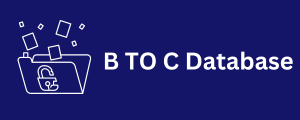Here are some of the most important metrics to track for B2B email. Segmentation is a crucial strategy for B2B marketers to deliver targeted and relevant messages to their audience. This segmentation helps you tailor your messages to the unique characteristics and needs of different segments within your target audience. Firmographic segmentation: Consider firmographic attributes such as the type of industry, geographic location, or the company’s stage in the business lifecycle.
This segmentation allows
You to customize your messaging based on the specific challenges, goals. Characteristics associated with different types of organizations. Behavioral Réunion B2B List segmentation. Analyze the behavior of your email subscribers. Including their engagement level, past purchases. Website activity, or response to previous campaigns. Segment your list based on. these behavioral patterns to send targeted messages. That align with their demonstrated interests and actions. Purchase history segmentation. Segment your email list based on the past purchases o used. By your subscribers. This segmentation allows you to recommend. Complementary products, offer upgrades. Cross-sell opportunities to specific segments based on their purchase history.
Engagement segmentation
Segment your audience based on their level of engagement with your emails. Identify highly engaged subscribers, moderately engaged subscribers, and B2C Database those who haven’t engaged recently. Tailor your messaging and frequency of communication based on these engagement levels to re-engage inactive subscribers or nurture your most engaged contacts. Persona-based segmentation: Create personas that represent your target audience and segment your email list based on these personas. Each persona represents a specific set of characteristics, goals, pain points, and preferences. Segmenting your list based on personas allows you to deliver messages that resonate with the unique needs and motivations of each segment.
Lifecycle stage segmentation: Consider where your subscribers are in the buyer’s journey or customer lifecycle. Segment your list into different stages such as leads, prospects, current customers, or past customers. Send relevant content and offers based on their stage to move them smoothly through the funnel and nurture customer loyalty. Content preference segmentation: Offer subscribers the option to select their content preferences during the signup process.



